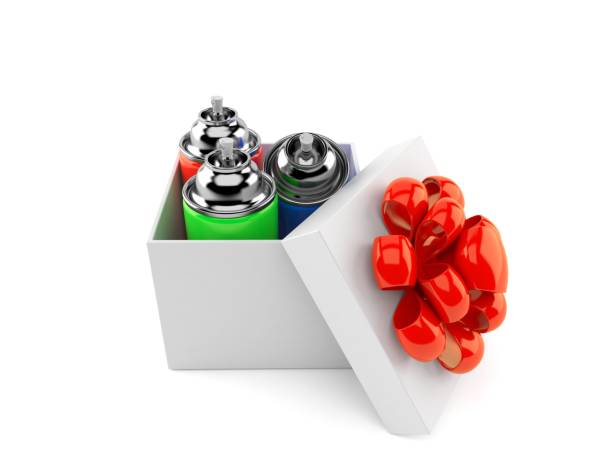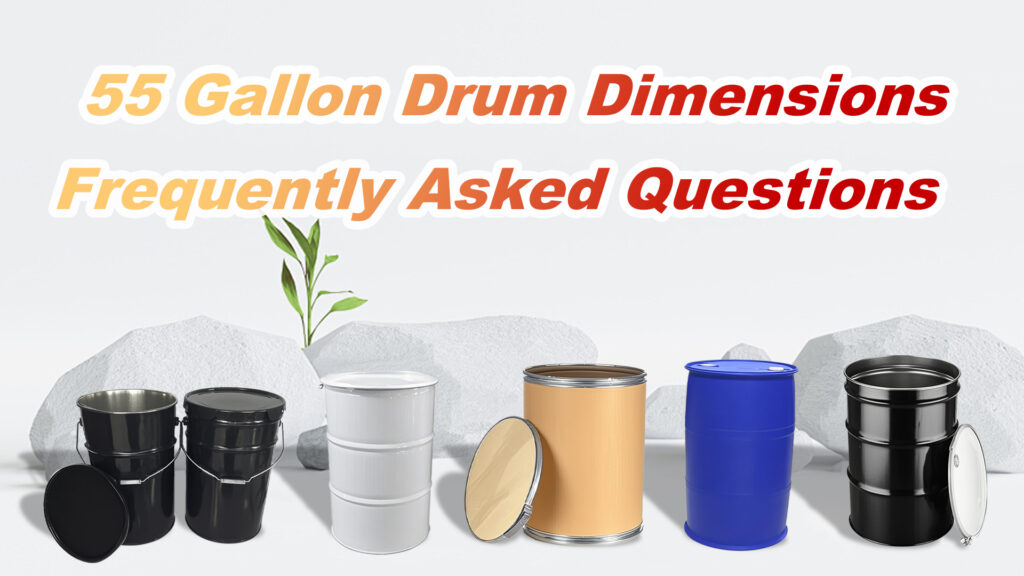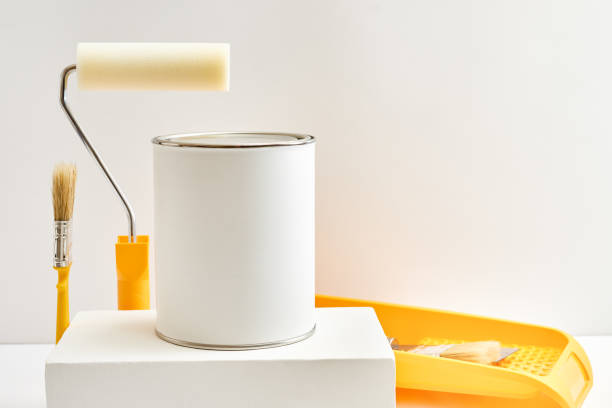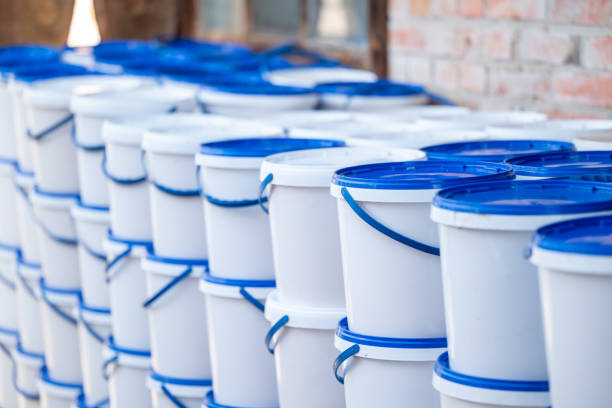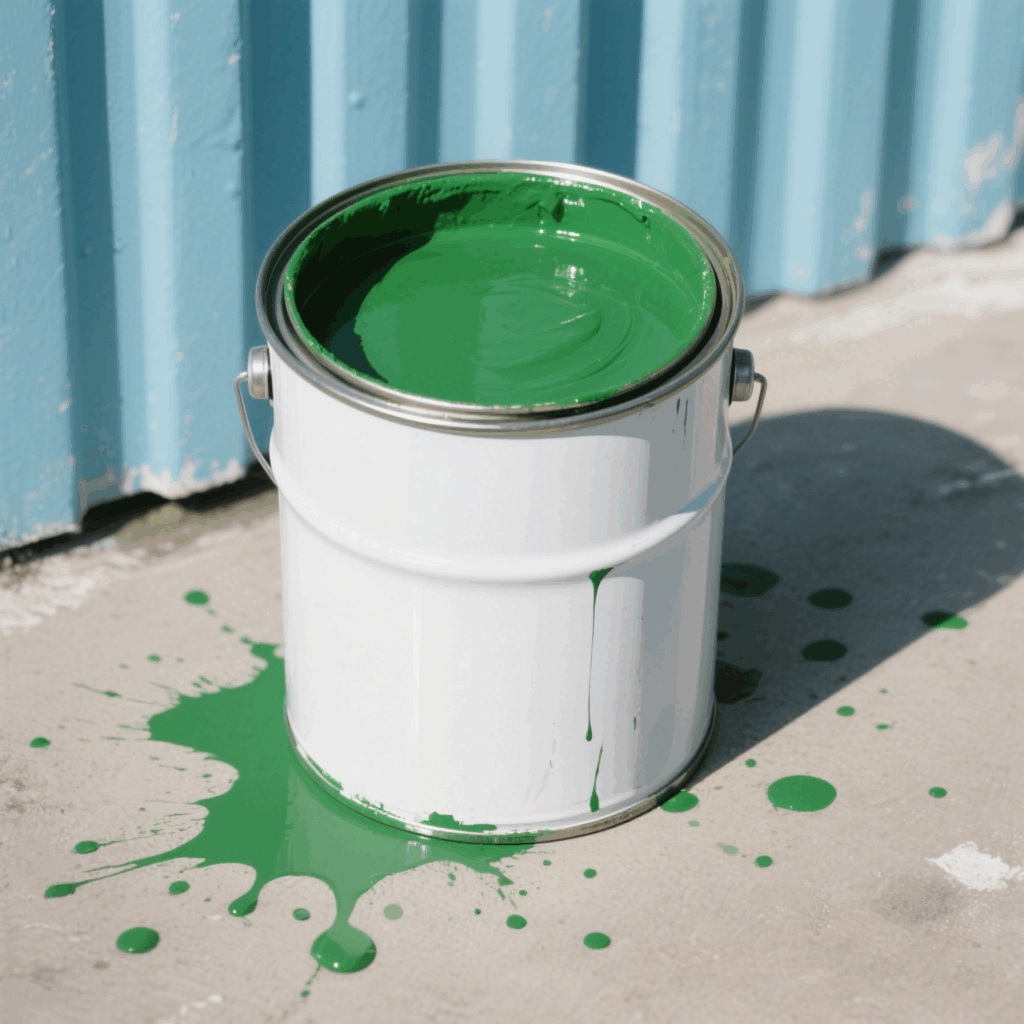You’re standing in front of your suitcase, travel checklist in hand. Toothbrush? Check. Passport? Check. Your favorite hairspray/deodorant/sunscreen spray…? Hold on. Can you even bring that aerosol can on the plane?
It’s a question that trips up even seasoned travelers. The rules around aerosols can seem confusing, inconsistent, and downright anxiety-inducing. Will it get confiscated at security? Can it go in your carry-on, or does it have to be checked? What about those flammable symbols?
Deep breath. Packing for a trip should be exciting, not stressful. We’ll cover the rules, the ‘how-tos’, the ‘what-ifs’, and help you pack those cans with confidence, whether you’re flying domestically or internationally.
Wielkie pytanie: Can You Actually Fly with Aerosol Cans?
Let’s get straight to it: Tak, you generally Móc fly with aerosol cans, but with significant restrictions and rules. It’s not a free-for-all. Where you pack them (carry-on vs. checked baggage) and what type of aerosol it is makes all the difference.
Think of it like this: regulatory bodies like the Transportation Security Administration (TSA) in the US, the Canadian Air Transport Security Authority (CATSA), and similar organizations worldwide, along with individual airlines, have rules designed for one primary reason: bezpieczeństwo. Aerosol cans are pressurized containers, and some contain flammable propellants. Improper handling or packing could pose risks on an aircraft.
Dlatego, the rules are about managing these risks by limiting quantities, specifying types, and dictating how they must be packed.
Understanding the Core Rules: Podręcznik vs. Checked Baggage
This is the most crucial distinction. The rules for aerosols differ significantly depending on whether you plan to pack them in your carry-on bag (the one you take into the cabin) or your checked luggage (the one that goes into the cargo hold).
Aerosols in Your Carry-On Bag: . 3-1-1 Rule Reigns (Mostly)
If you want to bring aerosols in your carry-on luggage, you need to be familiar with the 3-1-1 Reguła płynów. While aerosols aren’t liquids, for quantity purposes in carry-on bags, most personal care aerosols fall under these same restrictions.
Here’s a breakdown of the 3-1-1 rule:
- 3.4 uncje (100 Millitery) or less per container: Each individual aerosol container must be no larger than this size. The size refers to the container’s volume capacity, not the amount of product left inside. A half-empty 6oz hairspray bottle is still prohibited.
- 1 wielkości kwartału, jasne, zip-top bag: All your small liquid, żel, cream, paste, I aerosol containers must fit comfortably into jeden single, jasne, quart-sized bag. Comfortably means the bag should close easily without bursting at the seams.
- 1 bag per passenger: Each traveler is limited to just one of these quart-sized bags.
What types of aerosols are typically allowed in carry-on (following the 3-1-1 rule)?
- Toiletries and Personal Care Items: Think travel-sized hairspray, deodorant, dry shampoo, mousse, perfume/cologne sprays, shaving cream.
- Medicinal Aerosols: Such as asthma inhalers. While often exempt from the 3-1-1 bag requirement for medical necessity, they are still subject to screening. It’s wise to declare them to security officers. Check specific regulations for quantities and documentation needs, especially for prescription items.
What’s generally nie allowed in carry-on aerosols?
- Aerosols that are not toiletries or medicines.
- Flammable aerosols not specifically designed for personal care (even if travel-sized).
- Self-defense sprays (pepper spray, mace) – these are generally prohibited in the cabin.
- Any aerosol container larger than 3.4oz/100ml.
Key Carry-On Takeaway: Stick to travel-sized (3.4oz/100ml or smaller) toiletries and medicinal aerosols, place them in your single quart-sized bag, and present this bag separately during security screening for easy inspection.
Aerosols in Your Checked Baggage: More Leeway, But Still Regulated
Checked luggage offers more flexibility for packing aerosols, particularly regarding container size. Jednakże, there are still important limitations, primarily focused on type I total quantity.
General Rules for Aerosols in Checked Bags:
- Type Restriction: The rules primarily permit toiletries and medicinal aerosols. This includes items like full-sized hairspray, deodorant, shaving cream, sunscreen spray, insect repellent (for personal use), and medicinal sprays.
- Container Size Limits: While larger than carry-on sizes are allowed, individual containers typically cannot exceed 18 uncje (approx. 500 Millitery) Lub 17 uncje płynne (0.5 litry) by volume, Lub 1.1 pounds (0.5 kilograms) by mass. Always double-check the specific regulations applicable to your flight (TSA, CATSA, EU rules, itp.) as this can vary slightly.
- Aggregate Quantity Limits: There’s a limit on the total amount of these items (including liquids, aerosols, and gels that aren’t in your carry-on 3-1-1 bag) per passenger. This aggregate quantity is typically limited to 70 uncje (2 kilograms) Lub 68 uncje płynne (2 litry) per person. All your individual aerosol containers (plus other non-3-1-1 liquids/gels) must fit within this total limit.
- Safety Measures are MANDATORY: To jest krytyczne. The aerosol cans must have their caps securely in place or be otherwise protected (NP., with tape) to prevent accidental spraying during transit. The pressure changes and baggage handling can easily trigger an unsecured nozzle.
- No Unintended Release: The packing method must ensure the contents aren’t accidentally released. Secure caps are the primary way to achieve this.
What types of aerosols are generally prohibited in checked baggage?
- Highly Flammable Aerosols (Non-Toiletries): Think spray paint, WD-40, smary, cooking spray, spray starch, cleaning products, flammable insecticides not intended for personal use. Look for prominent flammable warning symbols. If it’s not for personal care or medicinal use on the body, it’s likely prohibited.
- Self-Defense Sprays: While some jurisdictions (like the US) may allow jeden small container (typically 4 fl oz or 118 Ml) of mace or pepper spray in checked baggage if it has a safety mechanism to prevent accidental discharge, international rules are often stricter, and many airlines forbid them entirely. Always check with your specific airline and the regulations of your destination/transit countries. Never pack these without confirming legality and specific packing requirements.
Key Checked Baggage Takeaway: You can pack larger toiletries and medicinal aerosols in checked bags, but ensure each container is within the individual size limit, the total quantity for all such items doesn’t exceed the aggregate limit, I most importantly, the cap is securely fastened to prevent accidental activation.
Loty międzynarodowe & Airline Variations: The Extra Layers
- International Rules: Regulations can differ significantly from country to country. What’s acceptable in the US might not be in Europe, Asia, or elsewhere. Security standards, allowable quantities, and interpretations of “toiletries” can vary. Always research the rules for your destination and any transit countries. Check the official government aviation security websites for those locations.
- Polityka linii lotniczych: Remember that airlines can impose stricter rules than the general government regulations. Just because the TSA allows something doesn’t guarantee your specific airline will. Always check the “Przedmioty ograniczone” Lub “Informacje o bagażu” section on your airline’s official website before you fly. This is non-negotiable for avoiding surprises at the airport.
How to Pack Aerosol Cans Safely and Smartly
Knowing the rules is half the battle; packing correctly is the other half. Here’s how to ensure your permitted aerosols travel safely and don’t cause messes or security issues:
- Check the Cap: Before anything else, ensure the cap is firmly attached to the aerosol can. If the cap seems loose or prone to falling off, consider securing it with tape (like packing tape or strong adhesive tape) wrapped around the cap and onto the can body. Make sure the tape doesn’t cover essential information like product identification or warnings.
- Bag It Up (Even in Checked Luggage): Place each aerosol can (or group of cans) inside a sealed plastic bag, like a Ziploc-style bag. This serves two purposes:
- Leak Containment: Jeśli, despite your best efforts, a can leaks or accidentally sprays, the bag will contain the mess and prevent it from ruining your clothes and other belongings.
- Organization: It keeps your aerosols grouped together.
- Pro Tip: For checked luggage, consider double-bagging for extra protection.
- Strategic Placement in Checked Bags:
- Don’t just toss the bagged aerosols into your suitcase.
- Place them towards the center of your luggage, cushioned by soft clothing on all sides. This helps protect them from impacts during baggage handling.
- Avoid placing heavy or hard objects directly on top of the cans, which could potentially depress the nozzle even with a cap on.
- Strategic Placement in Carry-On Bags:
- Your 3-1-1 bag containing travel-sized aerosols should be placed in an easily accessible part of your carry-on bag (like an outer pocket or right on top).
- You’ll need to remove this bag and place it in a separate bin during the security screening process, so having it readily available saves time and hassle.
- Inspect Before Packing: Give the can a quick once-over. Is it leaking? Is the nozzle damaged? Is the can severely dented? If it looks compromised, it’s safer to leave it behind or replace it.
What Kinds of Aerosols Are We Talking About? A Quick Recap
Let’s categorize common aerosols to reinforce what’s generally allowed and what’s not:
- Generally Allowed (following size/quantity/packing rules):
- Toiletries: Lakier do włosów, deodorant, body spray, perfume/cologne, dry shampoo, mousse, shaving cream, facial mists, spray sunscreen (personal use), travel-size spray hand sanitizer.
- Medicinal: Asthma inhalers, topical anesthetic sprays, nasal sprays (check if prescription documentation needed).
- Insect Repellents: Aerosol repellents designed for application on skin/clothing (NP., containing DEET or Picaridin). Check size limits and airline policy.
- Generally Prohibited (in both carry-on and checked):
- Household/Industrial: Spray paint, WD-40, smary, cleaning sprays (NP., oven cleaner, disinfectant sprays not intended for personal hygiene), spray adhesives, spray starch, cooking spray.
- Highly Flammable (Non-Toiletries): Anything with a prominent flammable symbol that isn’t a standard toiletry or medicine. W razie wątpliwości, leave it out.
- Highly Restricted (Check Airline & Destination Rules Carefully):
- Self-Defense Sprays (Mace/Pepper Spray): Generally forbidden in carry-on. Sometimes allowed in checked bags under very specific conditions (quantity, Mechanizm bezpieczeństwa) domestically in some regions, but often forbidden entirely, especially internationally. Requires diligent verification.
- Oxygen Canisters: Medical oxygen requires specific airline pre-approval and procedures. Recreational canned oxygen is generally forbidden.
Key Considerations Before You Even Start Packing
Thinking ahead can save you a lot of trouble:
- Do You Really Need It? Assess your needs for the trip. Could you buy the aerosol product at your destination? This eliminates packing concerns entirely, especially for common items like deodorant or hairspray.
- Consider Solid Alternatives: The beauty and personal care industry has exploded with solid alternatives! Think stick deodorant, solid perfume, shampoo bars, conditioner bars, soap bars, cleansing balms instead of sprays or liquids. These face zero restrictions related to liquids or aerosols.
- Check the Product Label: Look for:
- Rozmiar: Is it 3.4oz/100ml or less (for carry-on)? Is it over the individual checked baggage limit (NP., 18oz/500ml)?
- Flammability Symbols: While toiletries often contain flammable propellants, they are generally permitted within limits. Jednakże, prominent warnings on non-toiletry items are a red flag.
- Calculate Your Total Checked Quantity: If packing multiple larger aerosols in your checked bag, do a quick mental tally (or actual calculation based on container labels) to ensure you don’t exceed the aggregate limit (often around 2L or 2kg total for all liquids/aerosols/gels outside your 3-1-1 bag).
- Re-Check Official Sources: Rules can and do change. Before every trip, especially international ones, quickly re-verify the rules on the official websites:
- Your departure country’s aviation security authority (NP., TSA.gov, CATSA-ACSTA.gc.ca).
- Your destination country’s relevant authority (if different).
- Your specific airline’s website (under baggage or restricted items).
What Happens If You Get It Wrong?
Packing prohibited aerosols or exceeding limits isn’t just an inconvenience; it can lead to:
- Confiscation: Security officers will remove and dispose of non-compliant items. You won’t get them back. This can mean losing expensive products.
- Delays: You may be pulled aside for additional baggage inspection, causing you to lose time and potentially stress about making your flight.
- Missed Flights: In rare cases, significant violations or arguments could lead to longer delays.
- Fines: Attempting to bring hazardous materials (like large quantities of flammable aerosols) onto a plane improperly can potentially result in fines.
It’s simply not worth the risk. Following the rules ensures a smoother journey for everyone.
Często zadawane pytania (Często zadawane pytania) About Flying with Aerosols
Let’s tackle some common specific questions:
- Q1: Can I bring hairspray on a plane?
- A: Tak. In carry-on, it must be 3.4oz/100ml or less and fit in your 3-1-1 bag. In checked baggage, larger sizes are allowed (up to the individual container limit, NP., ~18oz/500ml, and within the total aggregate limit), provided the cap is secured.
- Q2: Is aerosol deodorant allowed in carry-on?
- A: Tak, if it’s 3.4oz/100ml or less and fits in your 3-1-1 bag. Stick deodorant has no restrictions.
- Q3: Can I pack aerosol bug spray?
- A: Generally yes, for repellents meant for personal use on skin/clothing. Follow carry-on (3.4oz/100ml) or checked baggage (larger size/aggregate limits, secure cap) rules. Industrial or highly flammable insecticides are prohibited. Always check airline policy, as some may have specific restrictions on certain types (like bear spray, which is often forbidden).
- Q4: Is spray paint allowed in checked luggage?
- A: NIE. Spray paint is considered a hazardous material (flammable aerosol) and is prohibited in both carry-on and checked baggage.
- Q5: Can I bring dry shampoo spray on a plane?
- A: Tak. Treat it like hairspray: 3.4oz/100ml or less in your carry-on 3-1-1 bag, or larger sizes (within limits) in checked baggage with the cap secured.
- Q6: How much total aerosol can I bring in my checked bag?
- A: This refers to the aggregate limit for all medicinal and toiletry items (płyny, aerosols, gels) outside your carry-on 3-1-1 bag. It’s typically around 2 kg (70 uncje) Lub 2 L (68 uncje płynne) per person, with individual containers not exceeding 0.5 kg (1.1 lbs) Lub 0.5 L (17 uncje płynne). Verify these exact limits with your airline and relevant authorities.
- Q7: Do the rules for aerosols differ for international flights?
- A: Tak, they absolutely can. Always check the regulations for your specific destination and any transit countries, as well as your airline’s policy. Don’t assume the rules are the same everywhere.
- Q8: Where is the single best place to find the most current rules?
- A: There isn’t one single global source. You must check BOTH the official government aviation security website for your departure/arrival countries (NP., TSA for US flights) AND your specific airline’s website.
Wniosek: Pack Smart, Fly Safe
Navigating the rules for packing aerosol cans doesn’t have to be a source of pre-flight anxiety. By understanding the fundamental differences between carry-on and checked baggage regulations, knowing the types of aerosols permitted, and adhering to size and quantity limits, you can pack confidently.
Remember the key takeaways:
- Check the Rules: Always verify current regulations with official sources (TSA/CATSA/etc.) AND your specific airline before you pack.
- Carry-On: Use the 3-1-1 rule (3.4oz/100ml max per item, in 1 quart bag, 1 bag per person) for toiletries/medicines.
- Checked Baggage: Larger toiletries/medicines are often allowed (check individual container and total aggregate limits), but secure the cap diligently.
- Prohibited Items: Avoid flammable non-toiletries (Farba natryskowa, WD-40), industrial aerosols, and be extremely cautious with self-defense sprays (verify legality).
- Pack Safely: Use sealed plastic bags to contain potential leaks and cushion cans in your luggage.
- Consider Alternatives: Solid toiletries or buying at your destination can simplify packing.
By following these guidelines, you can ensure your essential aerosols arrive safely with you, letting you focus on enjoying your trip.















